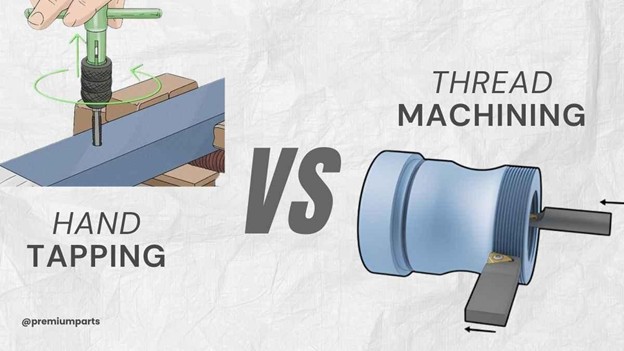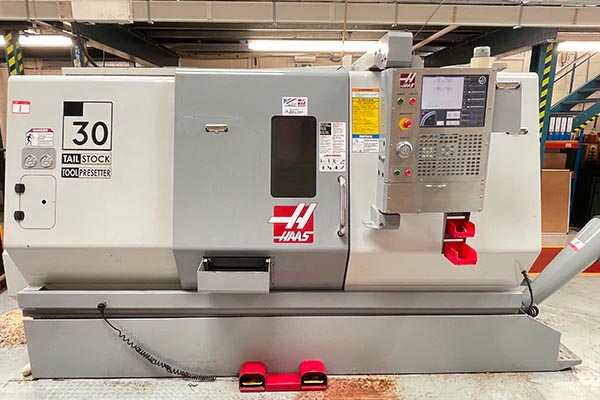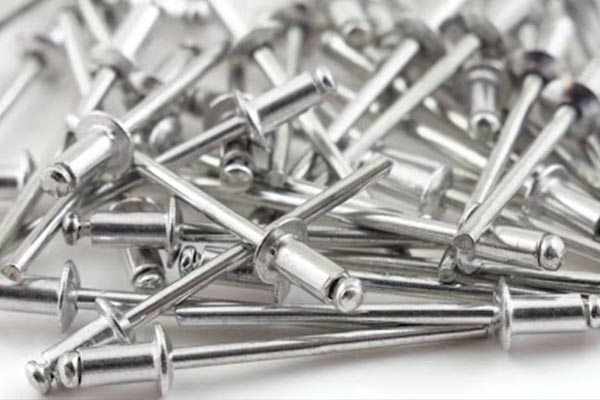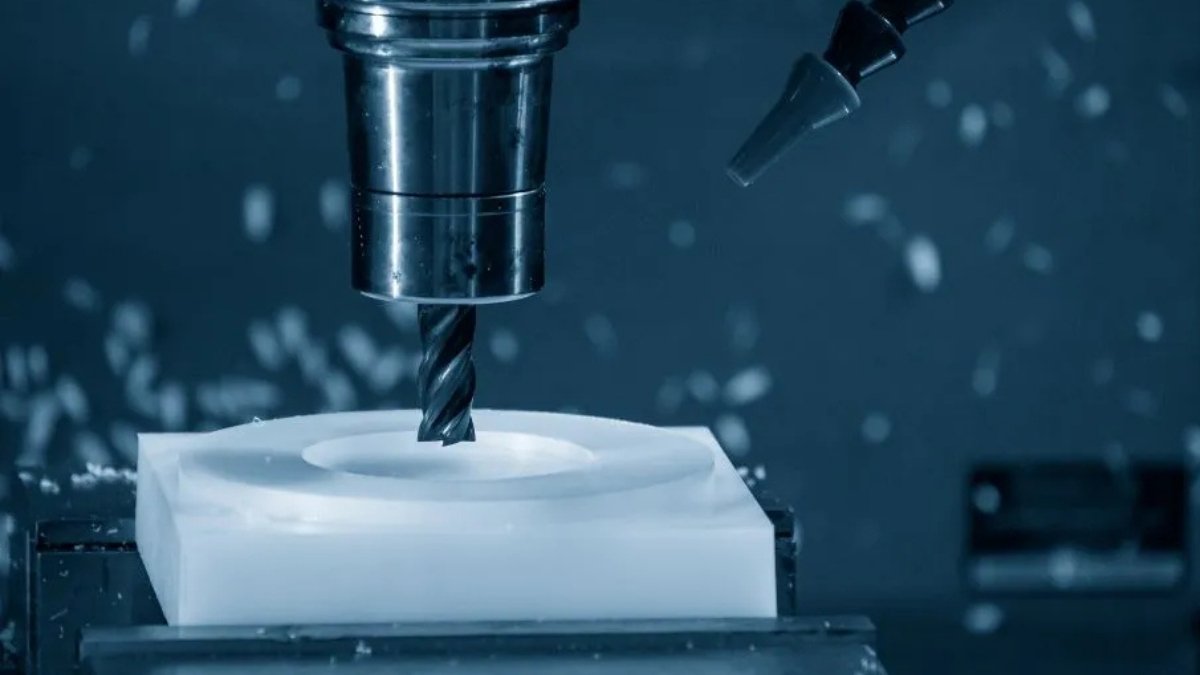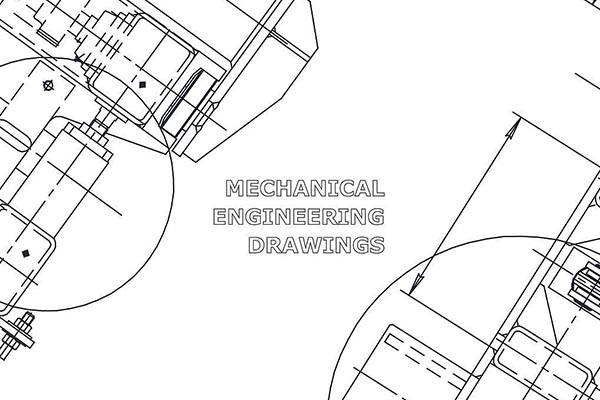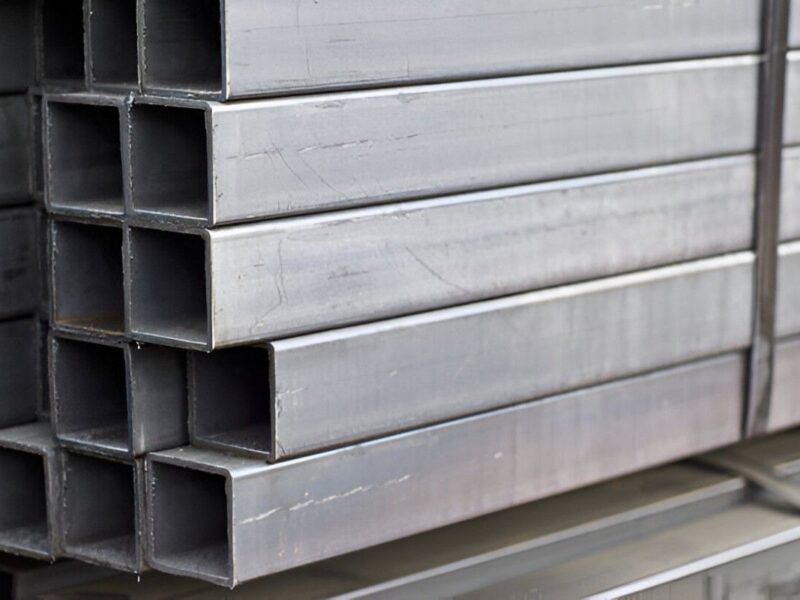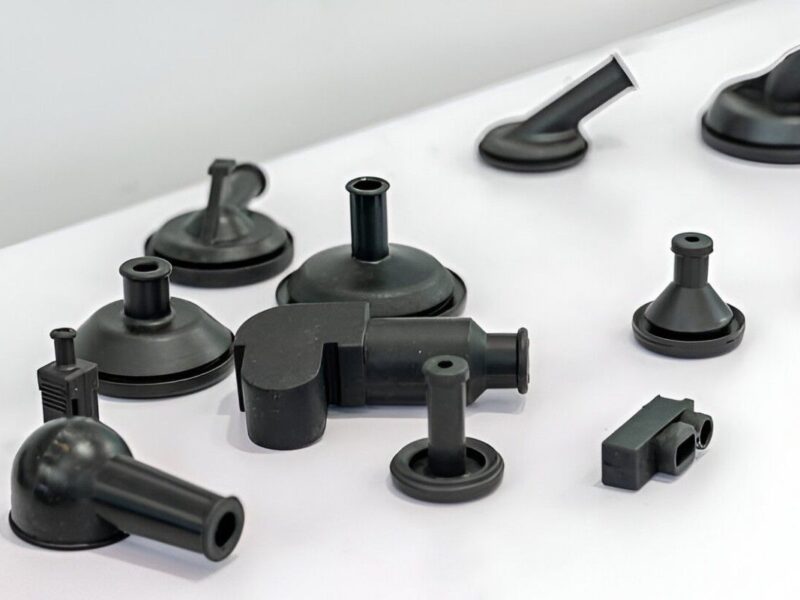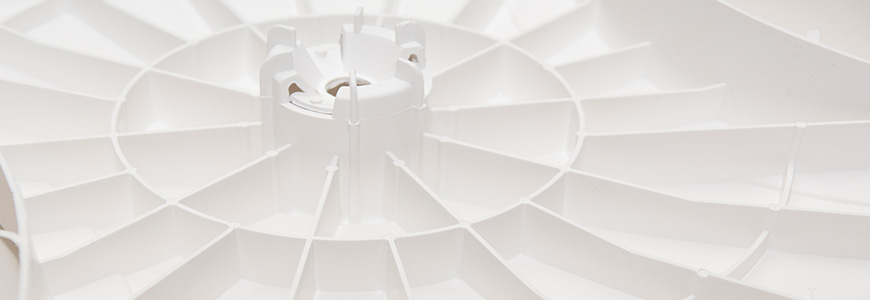 Injection Molded Component
Injection Molded Component
Image Description: The image shows a white injection-molded component.
The design of any product is usually its starting point, determining both the time, method, and cost of bringing the product from concept to reality. When manufacturing molded parts for end-use, qualitative factors such as high accuracy, repeatability, and precision are the top priority. All of these factors are significantly impacted by the design of the part to be manufactured.
Other quantitative factors, such as cost savings and price per unit, are also dependent on the simplicity or complexity of the design. To achieve the perfect product without compromising on both quality and quantity, Premium Parts considers six critical considerations when designing molded parts.
Quick Tips for Designing Molded Parts
In this section, we’ll walk through a few quick tips that can make designing molded parts easier and more effective. These are the basics that help you save time, avoid errors, and get better results.
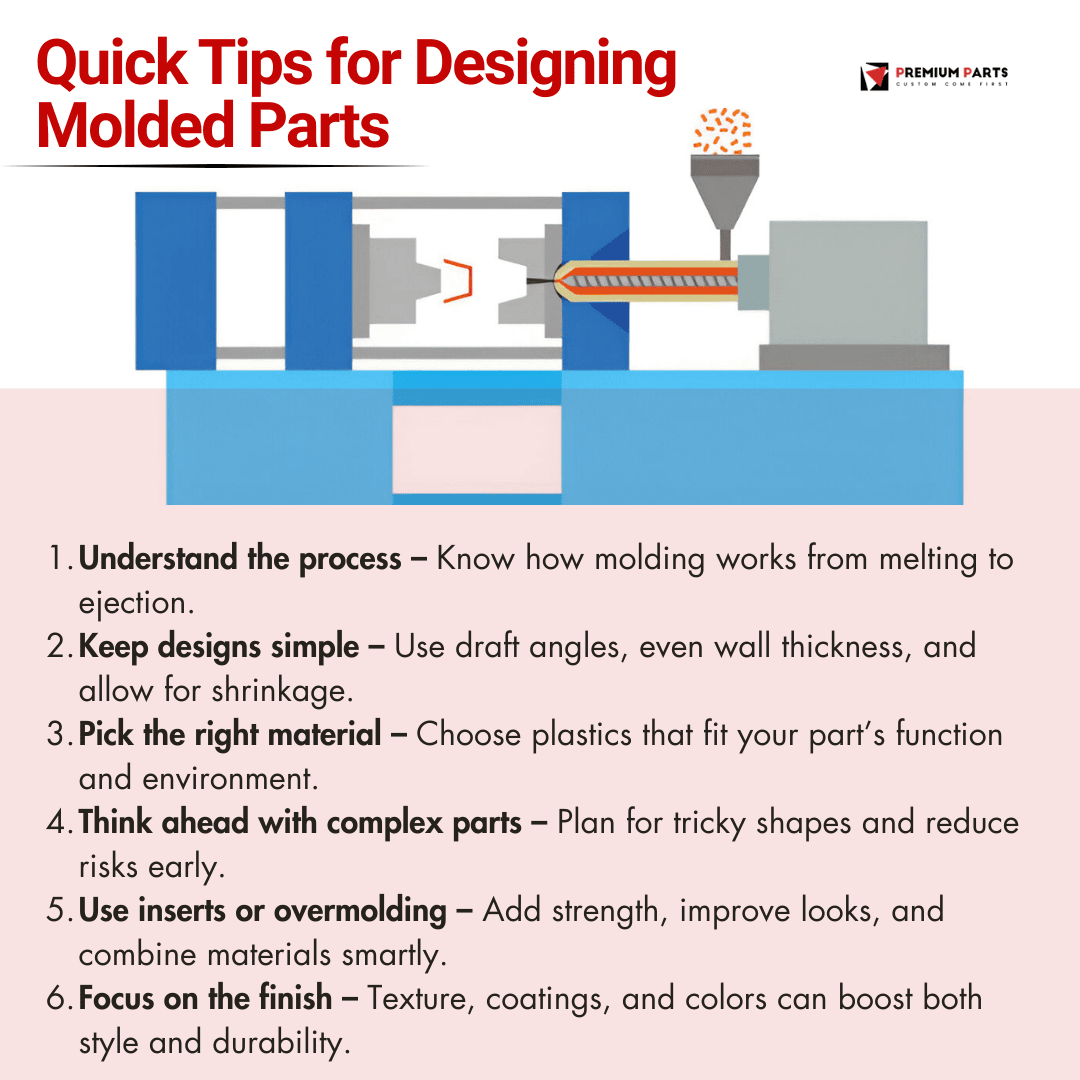 6 Quick and Effective Tips for Designing Molded Parts
6 Quick and Effective Tips for Designing Molded Parts
Image Description: The infographic image highlights six valuable tips for Designing Molded Parts.
1. Grasp the concept
To design an optimal injection-molded part, it is imperative to know, at the very least, the basic overview of the process. The injection molding technique has four basic steps.
- First, small plastic pellets are melted to form a molten liquid.
- This molten liquid is then injected into the mold (a die-cut shape of the final part).
- Next, the injected molten plastic is allowed to cool in the mold, set, and take the shape of the mold.
- For the final part, the completed parts are then ejected from the mold.
An understanding of these basics will allow you to consider the effect of temperature, pressure, and shrinkage on your design.
2. Design correctly and optimally
The best approach for every project is to adhere to some extent of design for manufacturability guidelines. This is because sculpting a 3D model of an end part is entirely different from the production process itself. During manufacturing, many parameters come into play. There are also common defects that must be accounted for if you are to have an end part that matches specifications.
To get accurate parts, consider the basics such as proper draft angles, using uniform wall thickness, avoiding complex features, and more. Because plastic parts deform, keep in mind that you will need to design your mold larger than the required final size to account for the material shrinkage.
3. Use the Right materials for the Part Functions
Ensure that you select the right material and plastic resins for each part of your product. If you’re building a composite part from more than one material, take into consideration the conditions of use and the exposure that each of these parts may have.
Factors such as temperature, pressure, repeat usage, stress, proposed lifespan, and more should advise your material selection. Generally, there are thermoplastics and thermosets. Each category behaves differently in the presence of heat. Selecting the right material will significantly affect the functionality and life span of your product.
4. Strategize on How to Manage Complex Parts
Before concluding on your design, strategize on how best to manage the complex parts and geometries in the design. Anticipating these challenges beforehand keeps you a step ahead in understanding the complex functions that these parts perform, the what-could-go-wrong, and how to mitigate these risks.
5. Use Insert and Overmolding
Molding techniques like inserting molding and overmolding can help to improve design, add aesthetics, and enhance functionality. This is because overmolding adds layer that adds some properties that are unattainable using a single material. Using inserts, you can add durability and strength to your part by using metallic parts as a bolster.
6. Perfect finishing to Enhance the Final Presentation
Visuals, finishing, and aesthetics are just as important as part functionality and strength. Add coloring, texture, and protective coatings to enhance the final presentation of your part and convey desired characteristics.
There you have it. These are our 6 tips to consider when designing parts for injection molding. If you are looking to manufacture high-quality plastic parts, submit your file to get a free quote from one of our design experts at Premium Parts or see more about our injection molding services here!




